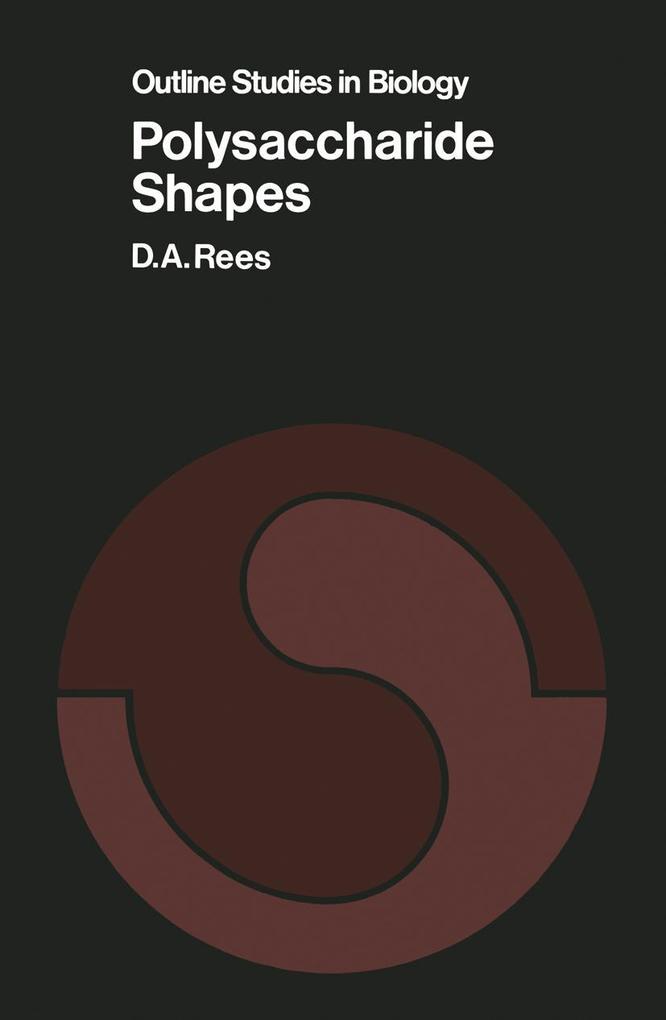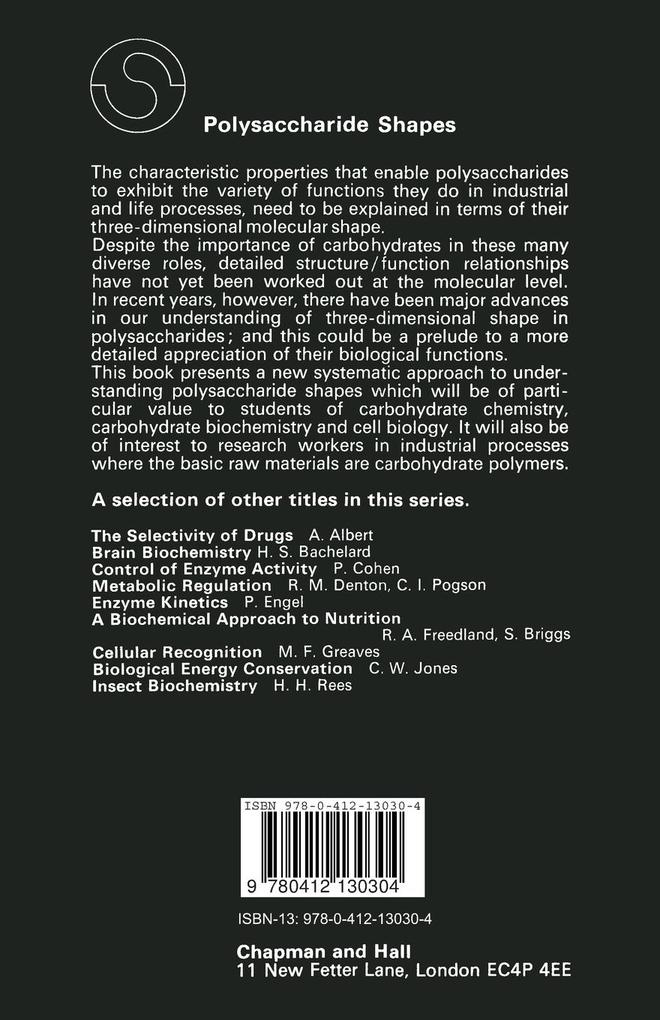
Zustellung: Mi, 14.05. - Fr, 16.05.
Versand in 2 Tagen
VersandkostenfreiBestellen & in Filiale abholen:
1 Basic ideas about molecular shape.- 1.1 Shapes of biopolymers.- 1.2 Conformational principles.- 1.3 Shapes in equilibrium.- 2 The building units.- 2.1 Pyranose (six membered) forms.- 2.2 Furanose (five membered) forms.- 2.3 Other forms.- 2.4 Conformation and configuration: isomers and derivatives.- 2.5 Sugar shapes in hydrolysis of carbohydrate chains.- 2.6 Prediction of shapes.- 2.6.1 Estimation of interaction free energies.- 2.6.2 Calculation of conformational energies.- 2.7 Natural building units.- 3 The linkages.- 3.1 Linkage structures and patterns.- 3.2 Linkage conformation.- 3.3 Chain conformation: order versus disorder.- 4 Simple carbohydrate chains of the periodic type.- 4.1 Conformational families.- 4.2 Occurrence, properties and function of the ribbon family.- 4.2.1 Extracellular carbohydrate composites.- 4.2.2 The plant cell wall.- 4.2.3 Carbohydrate sequences in plant cell walls.- 4.2.4 Ribbon sequences in other extracellular structures.- 4.3 Occurrence, properties and function of the hollow helix family.- 4.3.1 Energy reserve polysaccharides: starch and glycogen.- 4.3.2 Participation of hollow helices in fatty acid biosynthesis.- 4.3.3 Hollow helices with structural functions.- 4.4 Loosely jointed linkages and chains.- 5 More complex carbohydrate chains.- 5.1 Periodic chains with mixed linkages.- 5.2 Interrupted chain sequences.- 5.2.1 Carrageenans.- 5.2.2 Interrupted sequences in the general mechanism of gelation.- 5.2.3 Interrupted sequences in the plant cell wall.- 5.2.4 Interrupted sequences in carbohydrate chains of connective tissues.- 5.3 Aperiodic sequences.- 5.3.1 Mucous secretion.- 5.3.2 Carbohydrates on folded polypeptide chains: immunoglobulin IgG.- 5.3.3 Glycoproteins as antigenic determinants and recognition molecules .- References.
Inhaltsverzeichnis
1 Basic ideas about molecular shape. - 1. 1 Shapes of biopolymers. - 1. 2 Conformational principles. - 1. 3 Shapes in equilibrium. - 2 The building units. - 2. 1 Pyranose (six membered) forms. - 2. 2 Furanose (five membered) forms. - 2. 3 Other forms. - 2. 4 Conformation and configuration: isomers and derivatives. - 2. 5 Sugar shapes in hydrolysis of carbohydrate chains. - 2. 6 Prediction of shapes. - 2. 7 Natural building units. - 3 The linkages. - 3. 1 Linkage structures and patterns. - 3. 2 Linkage conformation. - 3. 3 Chain conformation: order versus disorder. - 4 Simple carbohydrate chains of the periodic type. - 4. 1 Conformational families. - 4. 2 Occurrence, properties and function of the ribbon family. - 4. 3 Occurrence, properties and function of the hollow helix family. - 4. 4 Loosely jointed linkages and chains. - 5 More complex carbohydrate chains. - 5. 1 Periodic chains with mixed linkages. - 5. 2 Interrupted chain sequences. - 5. 3 Aperiodic sequences. - References.
Produktdetails
Erscheinungsdatum
25. August 1977
Sprache
englisch
Seitenanzahl
84
Autor/Autorin
D. A. Rees
Verlag/Hersteller
Produktart
kartoniert
Abbildungen
80 p.
Gewicht
119 g
Größe (L/B/H)
216/140/6 mm
ISBN
9780412130304
Entdecken Sie mehr
Bewertungen
0 Bewertungen
Es wurden noch keine Bewertungen abgegeben. Schreiben Sie die erste Bewertung zu "Polysaccharide Shapes" und helfen Sie damit anderen bei der Kaufentscheidung.











